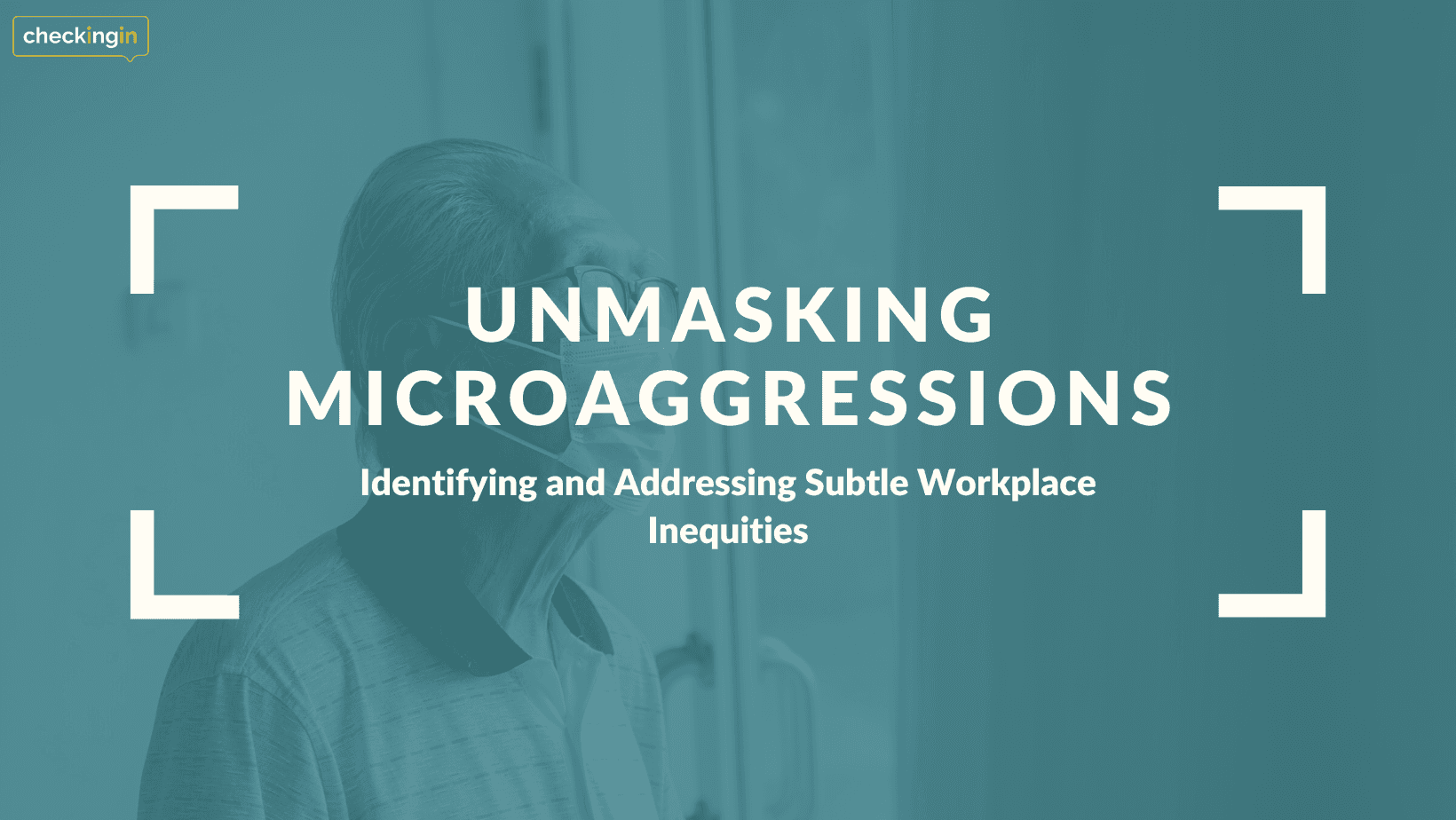Unmasking Microaggressions: Identifying and Addressing Subtle Workplace Inequities
July 6, 2023by Carissa Harrison in Workplace Wellbeing
In today's increasingly diverse and inclusive workplaces, addressing the presence of microaggressions is crucial to creating a psychologically safe work environment. Microaggressions are subtle, often unintentional acts or comments that can devalue or marginalize individuals based on their race, gender, age, ethnicity, or other protected characteristics. While they may appear innocuous at first glance, the cumulative impact of microaggressions can have a significant negative effect on workplace dynamics and more importantly individual lives.
Understanding microaggressions
Microaggressions are often categorized into three main types: microassaults, microinsults, and microinvalidations. Microassaults involve explicit discriminatory actions or slurs, while microinsults consist of subtly demeaning or derogatory comments. Microinvalidations disregard an individual's experiences, often by dismissing their feelings or denying the existence of discrimination. Recognizing these different forms of microaggressions is essential for effectively addressing them.
Verbal cues and non-verbal cues
Pay attention to the language used in the workplace, as microaggressions can be embedded in seemingly harmless comments. Examples include backhanded compliments, such as "You're so articulate for someone from your background", which implies surprise that someone from a particular ethnicity can speak well. Other indicators include making assumptions based on stereotypes, interrupting or talking over certain individuals, or constantly mispronouncing someone's name.
Microaggressions can also manifest through non-verbal cues. For instance, constantly excluding certain individuals from conversations, avoiding eye contact, or displaying dismissive body language can be forms of subtle discrimination. These actions can make someone feel invisible or unwelcome, reinforcing a sense of marginalization.
Stereotyping and preconceived notions
Pay attention to the stereotypes and preconceived notions that arise in the workplace. When individuals are repeatedly assigned certain roles or responsibilities based on stereotypes, it perpetuates bias and limits their professional growth. Be mindful of assumptions made about a person's abilities, interests, or career aspirations solely based on their demographic characteristics.
Paying attention to patterns
Microaggressions are often recurring and pervasive, rather than isolated incidents. Observe if certain individuals consistently face similar comments or actions that undermine their confidence, worth, or contributions. Identifying patterns can help determine if microaggressions are occurring within the workplace and whether targeted intervention is required.
Creating a safe reporting environment
Encourage open dialogue and provide avenues for individuals to report microaggressions without fear or retaliation. Establishing a safe reporting mechanism, such as an anonymous feedback system or trusted HR representative, empowers employees to come forward and share their experiences. Additionally, ensure that all reports are taken seriously and followed up with appropriate actions to address the issues.
Education and awareness
Promote education and awareness about microaggressions within your organization. Conduct workshops, training sessions, or diversity and inclusion programs to help employees understand the impact of microaggressions and learn strategies to mitigate them. Encourage empathy, active listening, and understanding among colleagues to foster a respectful and inclusive workplace culture.
Leading by example
Leaders and managers play a crucial role in setting the tone for the workplace. Lead by example by actively avoiding microaggressions and addressing them when they occur. Encourage open discussions, diversity of thought, and equal opportunities for everyone in the team. By creating a culture that values inclusivity and respects individual differences, leaders can contribute to a more equitable work environment.
Spotting microaggressions in the workplace requires attentiveness, empathy, and a commitment to fostering an inclusive culture. Remember, addressing microaggressions is a continuous process that requires ongoing education, awareness, and a collective effort to build a workplace that celebrates diversity and champions inclusivity.
To learn more about Diversity, Equity, and Inclusion in the workplace, join us for 'Deep Dive into DEI'

